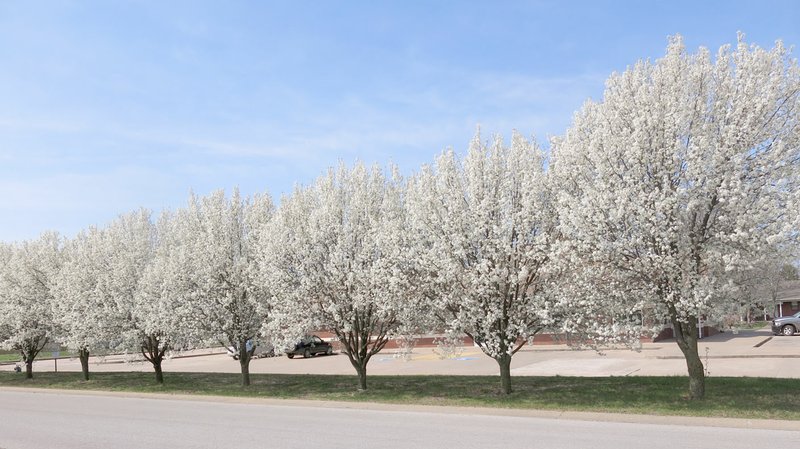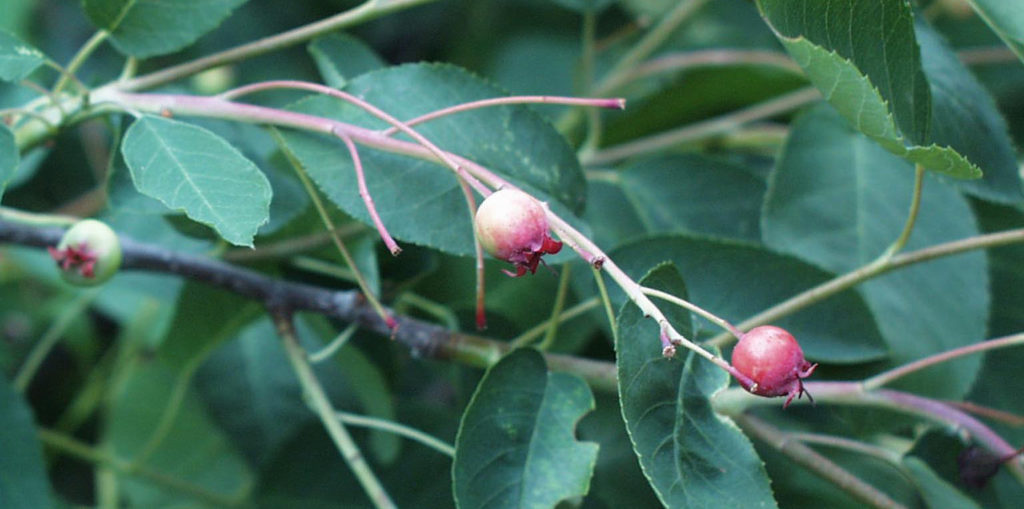Bradford Pear
Callery or Bradford pear, Pyrus calleryana, was introduced to the United States in 1909, and its uniform shape, profuse white flowers, and bright red fall foliage made the Callery pear a much-planted ornamental throughout the southeast.

For many years the trees were sterile, not producing fruit. But in the 2000s trees began to cross-pollinate and produce abundant amounts of fruit that were spread by birds.
Identification
Callery pear is a deciduous tree that reaches 60 feet in height (18 m). Callery pear produces abundant white flowers before it leafs out, and these flowers are pungent and unpleasant smelling. The foliage is ovate with a long petiole. In the fall the foliage is bright red and trees often have marble-sized hard fruit on them. Landowners should not confuse Bradford pears with Chickasaw plum trees, which have very similar flowers that begin blooming around the same time as pear trees do.
How It Spreads
Birds consume the fruit after frost has softened it, subsequently spreading it. It can be very abundant in old fields.
Managing Bradford pear
Trees should be cut and stumps immediately treated with herbicides to eliminate sprouting response.
Alternatives
Do not plant Callery or Bradford pear. Instead, plant a native alternative, such as serviceberry, Amelanchier Arborea. This native tree grows well in shade or in sun. The flowers provide early nectar for a number of pollinators and the fruit is eaten by bluebirds, orioles, yellow-shafted flickers, scarlet tanagers, hermit thrushes, Eastern kingbirds, downy woodpeckers and chickadees. Humans also enjoy the fruit! Other native alternatives are fringe tree, tupelo, or dogwood among many others.

(Photo by Paul Wray, Iowa State University, Bugwood.org)
Contact MFC for more information
For more information about Japanese climbing fern in Mississippi, contact us at comments@mfc.ms.gov.
